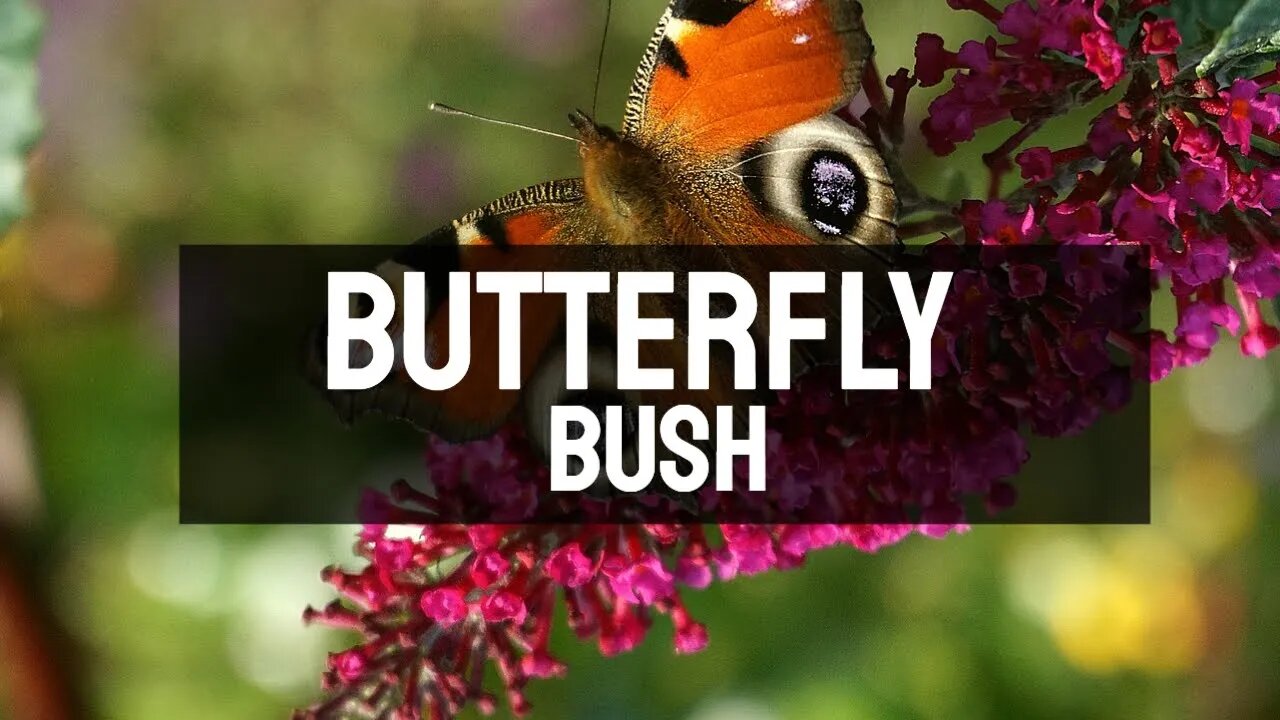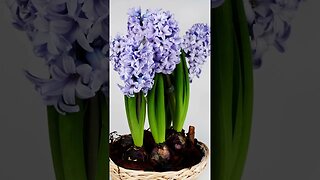Premium Only Content

Butterfly Bush: Perennial Flowers for the Full Sun (Best Plant for a Pollinator Garden)
The butterfly bush, a stunning and fragrant perennial shrub, is cherished by gardeners for its ability to attract butterflies and other pollinators. This article will delve into the essentials of butterfly bush cultivation, its uses in the garden, and the beautiful characteristics that make it a popular choice for landscaping.
The butterfly bush, known scientifically as Buddleja (or Buddleia), belongs to the Scrophulariaceae family. There are over 100 species within the Buddleja genus, with Buddleja davidii being the most common species cultivated in gardens. This species is native to central China and Tibet and has been widely introduced to gardens around the world for its ornamental value and wildlife appeal.
Ideal Growing Conditions.
Soil: Butterfly bush prefers well-draining, loamy soil with a pH level between 6.0 and 7.0. It can tolerate many soil types, but good drainage is essential to prevent root rot.
Light: Butterfly bush requires full sun, meaning at least 6 to 8 hours of direct sunlight daily. This helps the plant produce its vibrant flowers and attract pollinators.
USDA Planting Zones: Butterfly bush best suits USDA zones 5 to 9. It can withstand some frost, but it may die back to the ground in colder climates and regrow in the spring.
Planting Butterfly Bush.
When to plant: The best time to plant butterfly bush is in the spring, after the risk of frost has passed. This allows the plant ample time to establish itself before the winter months.
Choosing a location: Select a site with full sun exposure and well-draining soil. Consider the plant's mature size when choosing a location, as some varieties can reach up to 12 feet in height and width.
Preparing the soil: Amend the soil with organic matter or compost if necessary, to improve drainage and provide nutrients.
Planting: Dig a hole twice as wide as the root ball of the butterfly bush plant. Place the plant in the hole, ensuring the top of the root ball is level with the soil surface. Fill in the hole with soil and gently firm it around the plant.
Watering: Water the newly planted butterfly bush deeply, ensuring the soil is thoroughly moistened.
Butterfly Bush Maintenance.
Pruning: Prune butterfly bush in the late winter or early spring, cutting back the previous year's growth to about 12 inches above the ground. This will encourage vigorous new growth and abundant flowering.
Watering: Water the butterfly bush regularly, allowing the soil to dry out slightly between waterings. Overwatering can lead to root rot and other diseases.
Fertilizing: Apply a balanced, slow-release fertilizer in the spring to support healthy growth and flowering.
Attract beautiful wildlife.
Butterfly bushes are a popular choice for wildlife gardens, as their nectar-rich flowers attract pollinators, including butterflies, bees, and hummingbirds. When planted in groups, they can also be used as a focal point in mixed borders, foundation plantings, or as a privacy screen.
The Beauty of Butterfly Bush: Fragrance and Appearance.
Butterfly bushes are known for their captivating, cone-shaped flower panicles that bloom in shades of purple, pink, white, yellow, or red. Their sweet, honey-like fragrance is delightful and can be enjoyed from afar. The shrub's arching branches are adorned with elongated, lance-shaped leaves that provide a lush backdrop for the vibrant flowers.
Propagating the butterfly bush.
Butterfly bush reproduces through seeds and vegetative propagation. When propagating by seed, start them indoors 8 to 10 weeks before the last frost date. Transplant the seedlings outdoors once they have grown at least 3 to 4 inches tall and the risk of frost has passed.
Softwood or semi-hardwood cuttings can be taken from mature plants during late spring or early summer for vegetative propagation. These cuttings should be planted in a well-draining soil mix and kept in a sheltered, warm location until they develop roots. Once rooted, they can be transplanted to their permanent location in the garden.
Give the butterfly bush a chance.
The butterfly bush is a versatile, fragrant, and visually appealing shrub that can enhance any garden with its vibrant blooms and ability to attract pollinators. By understanding its cultivation requirements and recognizing its uses in the garden, you can enjoy the many benefits that the butterfly bush has to offer. Add this alluring plant to your garden, and experience the enchanting world of butterfly bush firsthand.
Connect with us
Facebook: https://www.facebook.com/TayloesLawnCare
Web: https://www.tayloeslawncare.com
MeWe: https://mewe.com/p/diyhomegarden
Image and music licensed via Canva Pro
-
 0:51
0:51
Garden Revelations
1 year agoHYACINTH: A breathtaking early spring bulb flower to plant in the fall for early spring pollinators
117 -
 LIVE
LIVE
TimcastIRL
2 hours agoDan Bongino ACCEPTS Deputy FBI Director, SECRET NSA CHATS EXPOSED w/Joey Mannarino | Timcast IRL
11,847 watching -
 1:09:33
1:09:33
Glenn Greenwald
6 hours agoMichael Tracey Reports from CPAC: Exclusive Interviews with Liz Truss, Steve Bannon & More | SYSTEM UPDATE #412
47.1K53 -
 56:02
56:02
Sarah Westall
3 hours agoBiohacking & Peptides: Weight loss, Anti-Aging & Performance – Myth vs Reality w/ Dr. Diane Kazer
12.5K14 -
 11:22
11:22
Bearing
13 hours ago"Anxious & Confused" Federal Workers FREAK OUT Over DOGE Efficiency Email 💥
4.03K50 -
 LIVE
LIVE
Flyover Conservatives
21 hours agoUS STOCK MARKET: Sinking Ship - Dr. Kirk Elliott; How I Fought Back Against Woke Schools & Stopped Gender Bathrooms - Stacy Washington | FOC Show
770 watching -
 1:08:09
1:08:09
Donald Trump Jr.
7 hours agoFBI Dream Team, Plus Taking Your Questions Live! | Triggered Ep.219
135K206 -
 LIVE
LIVE
Akademiks
7 hours agoDrake and PartyNextDoor '$$$4U' Album Sells 250K first week. BIG AK IS BACK.
2,496 watching -
 3:12:08
3:12:08
MyronGainesX
6 hours ago $23.63 earnedDan Bongino Named As Deputy Director Of FBI And CPAC Recap
64.2K22 -
 3:12:31
3:12:31
vivafrei
6 hours agoBarnes Live from Seattle - Defending Benshoof in a Case that is CRAY CRAY!
78K26